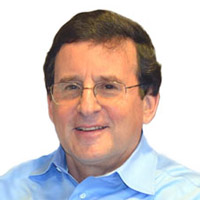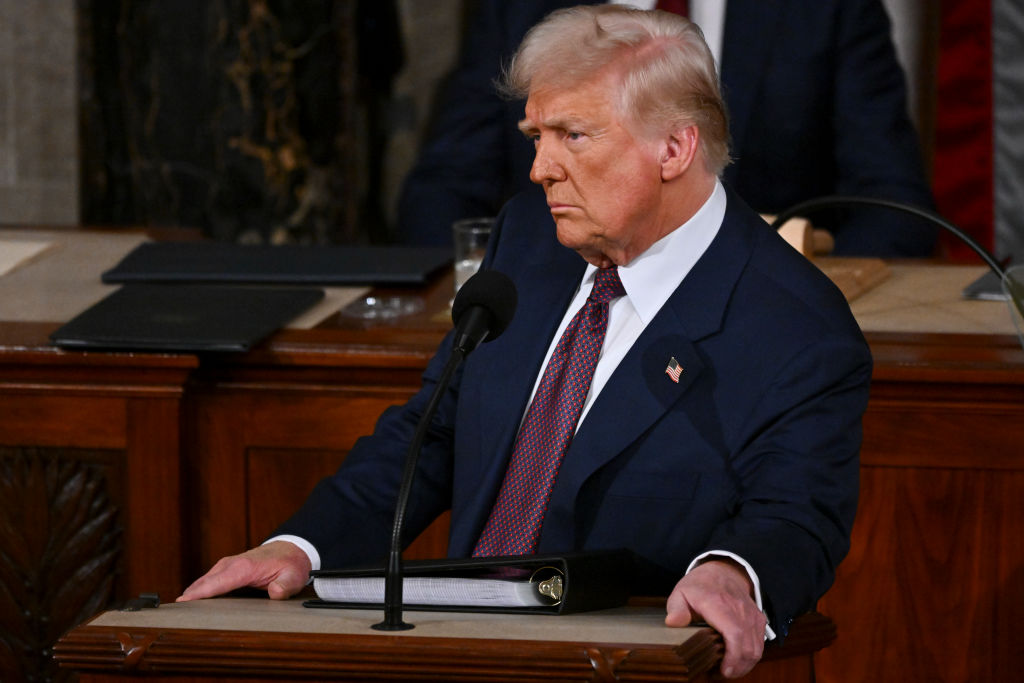How to Get More Retirement Income From Your 401(k)
An integrated approach of investments and annuities could provide you with more retirement income in addition to protection against inflation and late-in-life expenses.


One might yearn for the days of company pensions, but we live in the era of the 401(k) and similar plans, so we might as well take full advantage of them. That means socking away at least the maximum that your plan provides in pre-tax contributions and encouraging your bosses to offer matching payments and the investments that will best help grow your pot of retirement money.
In fact, at least 85% of all eligible employers offer a 401(k) and employees put an average of 6.5% of their salaries into them each year. According to a report by Fidelity, the average 401(k) balance reached $112,400 in the second quarter of this year.
All good news!
From just $107.88 $24.99 for Kiplinger Personal Finance
Become a smarter, better informed investor. Subscribe from just $107.88 $24.99, plus get up to 4 Special Issues

Sign up for Kiplinger’s Free Newsletters
Profit and prosper with the best of expert advice on investing, taxes, retirement, personal finance and more - straight to your e-mail.
Profit and prosper with the best of expert advice - straight to your e-mail.
Current options from your employer or AI
When you are ready to leave that job, however, things change. Very few, and particularly small businesses, employer-sponsored programs offer a retirement planning option. The most guidance you might get is something like, “You can stay invested in our investment portfolios and hope they produce regular income like your career did, or maybe you can invest your savings in an income annuity and enjoy the income safety annuities offer.”
Or, you might ask a chatbot like ChatGPT for advice. We asked, “How much income can I expect from the $1 million I have in my 401(k) plan when I take late retirement at age 70?” The answer was a generic recommendation to withdraw 4% a year for as long as you can.
None of those is a good enough alternative
If you stay wholly invested in the markets, you’ll need to withdraw your income from your savings, which is not the same as getting employer matches and reinvesting investment earnings, and taking advantage of dollar-cost averaging when the markets go down. (After retirement, when the markets dive, there’s no silver lining.) Remember that average investors on their own underperform the market by 1% to 2% per year.
Putting all your money into an income annuity is indeed safe, but may not get adequate inflation protection or have liquid funds for expenses like medical and caregiver costs. Even if your employer does suggest annuity choices, you should ask whether they are based on current rates in the market and offer a choice of competitive carriers.
And the 4% rule has been discredited by experts, particularly its performance in 2022 when both the bond and stock markets fell.
There is a better way, an integrated approach with both investments and annuities that provides more income and protection against inflation and late-in-life expenses, as well as a starting income percentage of more than 6% for some plans.
Use your qualified plan savings for income
I wrote in my recent article Do You Have Enough Money to Retire? That Is the Question that retirees should “focus on retirement income, but don’t lose sight of other considerations, like legacy and liquidity. Most important, wherever possible, test whether a particular product or strategy improves your income and other objectives.”
To illustrate, let’s examine two scenarios under IRA2Income planning for a 70-year-old female who has $1 million in her qualified savings accounts.
1. Maximize current income. In this scenario, our retiree will invest all of her savings in a balanced portfolio of stock and bond investments and two types of income annuities. Those annuities, in turn, will be split between (1) an immediate annuity with income starting at age 70 and (2) a deferred income annuity called a QLAC providing laddered income to protect against inflation.
You may remember news about the QLAC, or qualifying longevity annuity contract, from last year, when Congress enacted the SECURE 2.0 Act. A QLAC allows you to defer more taxes and buy more retirement income from your 401(k), rollover IRA or similar tax-qualified accounts. Despite the favorable legislation, not all employer-based planning integrates QLACs into their solutions.
Under this plan, pictured below, our retiree’s starting income is $62,700, or 6.27% of her savings. A far cry from 4%.

The value of her legacy at 95 will still be nearly $500,000 at age 95, despite having to meet RMD requirements. If she wants to leave a larger legacy for the grandkids, she can try to build up her personal savings. And her portfolio from qualified plan savings at age 95 is higher than it might have been because, with the guaranteed income from the annuities, she was able to take a little more risk on the withdrawals from her balanced portfolio allocation.
2. Build a cushion for late-in-retirement expenses. In this scenario, our investor puts $100,000 of her $1 million of savings in a QLAC that will provide payments of $25,000 per year at age 85. She is looking ahead to health care insurance premiums and costs that may kick in with home aides, procedures or hospitalization.
Her starting income under this plan, from the $900,000 that remains in savings at 70, will be $57,063.

Even after 25 years of taking payments from the investments she built up as she saved for retirement, her legacy will amount to $509,000. Of course, she’ll also have the $25,000 per year from the QLAC.
These are just two of the many options that you can design for yourself. There’s even one more on the Go2Income drawing board, particularly for younger new retires who like the safety of these plans but don’t want to pay taxes before RMDs are required. (Contact me if you’d like to discuss this feature.)
Part of your total plan
For all the good that your 401(k), IRA and similar products can do for your retirement, they aren’t the only consideration. You will likely also have personal savings, Social Security and possibly a pension that will all add to your income potential. You can look at each separately (with IRA2Income and Savings2Income, for example) or integrate all income sources into an overall Go2Income plan based on your specific circumstances and needs, including how to find the best annuity provider among the highest-rated insurance companies. Those are all benefits you won’t get from your former employer or artificial intelligence.
To try out a plan, visit Go2Income, answer a few simple questions and get started on a plan to create maximum income from your savings.
related content
- Don’t Bet Your Retirement on Stocks: Follow These Four Tips
- Remember: Retirement Accounts Are Not All Taxed the Same
- Why So Many Experts Consider Annuities a Win for Retirees
- Can AI Plan Your Retirement Better Than I Can?
- Can Your Retirement Income Plan Cover Unplanned Expenses?
Profit and prosper with the best of Kiplinger's advice on investing, taxes, retirement, personal finance and much more. Delivered daily. Enter your email in the box and click Sign Me Up.

Jerry Golden is the founder and CEO of Golden Retirement Advisors Inc. He specializes in helping consumers create retirement plans that provide income that cannot be outlived. Find out more at Go2income.com, where consumers can explore all types of income annuity options, anonymously and at no cost.
-
 My Top 10 Stock Picks for 2026
My Top 10 Stock Picks for 2026Each year, we ask an expert to pick 10 stocks that have the potential to beat the market over the next 12 months. Here are his choices for 2026.
-
 Special Report: The Future of American Politics
Special Report: The Future of American PoliticsThe Kiplinger Letter The Political Trends and Challenges that Will Define the Next Decade
-
 We're Still Bullish on Stocks
We're Still Bullish on StocksWe're still bullish on stocks for 2026, but now is the time for investors to pull in their horns and dial down risk.
-
 Now That You've Built Your Estate Planning Playbook, It's Time to Put It to Work
Now That You've Built Your Estate Planning Playbook, It's Time to Put It to WorkYou need to share details with your family (including passwords and document locations) and stay focused on keeping your plan up to date.
-
 I'm a Wealth Adviser: These 10 Strategies Can Help Women Prepare for Their Impending Financial Power
I'm a Wealth Adviser: These 10 Strategies Can Help Women Prepare for Their Impending Financial PowerAs women gain wealth and influence, being proactive about financial planning is essential to address longevity and close gaps in confidence and caregiving.
-
 I'm a Financial Planning Pro: This Is How You Can Stop These 5 Risks From Wrecking Your Retirement
I'm a Financial Planning Pro: This Is How You Can Stop These 5 Risks From Wrecking Your RetirementYour retirement could be jeopardized if you ignore the risks you'll face later in life. From inflation to market volatility, here's what to prepare for.
-
 Are You Hesitating to Spend Money You've Spent Years Saving? Here's How to Get Over It, From a Financial Adviser
Are You Hesitating to Spend Money You've Spent Years Saving? Here's How to Get Over It, From a Financial AdviserEven when your financial plan says you're ready for a big move, it's normal to hesitate — but haven't you earned the right to trust your plan (and yourself)?
-
 Time to Close the Books on 2025: Don't Start the New Year Without First Making These Money Moves
Time to Close the Books on 2025: Don't Start the New Year Without First Making These Money MovesAs 2025 draws to a close, take time to review your finances, maximize tax efficiency and align your goals for 2026 with the changing financial landscape.
-
 Is Fear Blocking Your Desire to Retire Abroad? What to Know to Turn Fear Into Freedom
Is Fear Blocking Your Desire to Retire Abroad? What to Know to Turn Fear Into FreedomCareful planning encompassing location, income, health care and visa paperwork can make it all manageable. A financial planner lays it all out.
-
 How to Master the Retirement Income Trinity: Cash Flow, Longevity Risk and Tax Efficiency
How to Master the Retirement Income Trinity: Cash Flow, Longevity Risk and Tax EfficiencyRetirement income planning is essential for your peace of mind — it can help you maintain your lifestyle and ease your worries that you'll run out of money.
-
 I'm an Insurance Expert: Sure, There's Always Tomorrow to Report Your Claim, But Procrastination Could Cost You
I'm an Insurance Expert: Sure, There's Always Tomorrow to Report Your Claim, But Procrastination Could Cost YouThe longer you wait to file an insurance claim, the bigger the problem could get — and the more leverage you're giving your insurer to deny it.